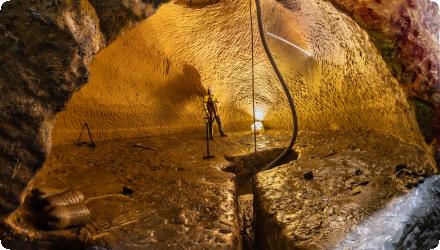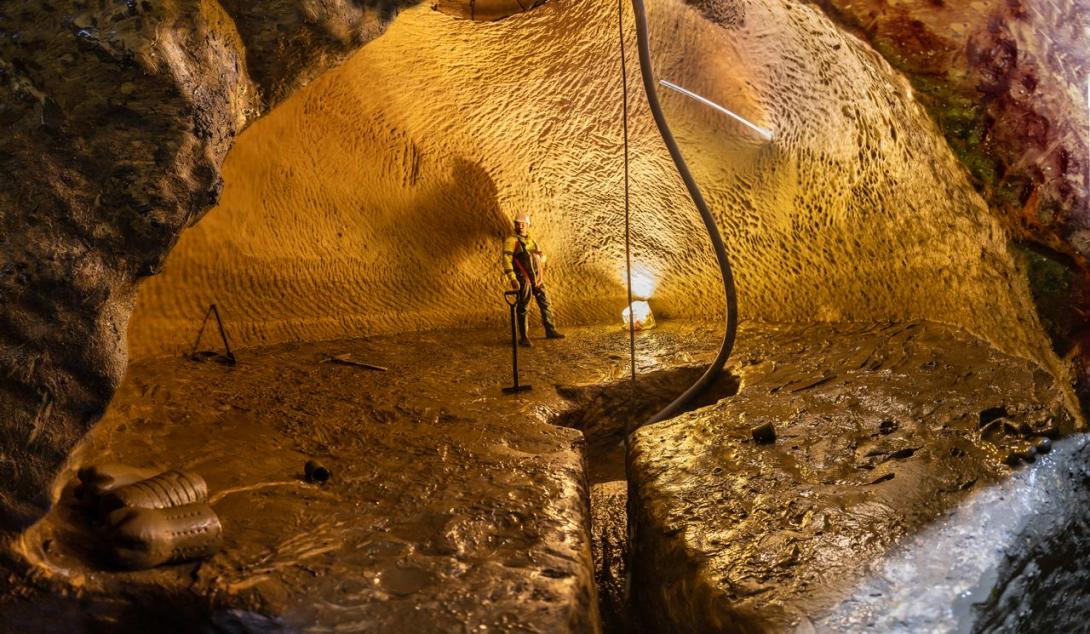Last update
2025
Summary
Domestic rainwater harvesting in Malta is the long-running Alter Aqua programme. Launched in 2011 in Gozo by GWP-Med with national partners, Alter Aqua installed and reinstated RWH in public buildings - first four Gozo schools for toilet flushing, plus additional school and farm systems - and a greywater unit at Gozo Stadium; it then expanded to Malta. By late 2024 the programme restored historic cisterns (e.g., Birgu) and launched a Reservoir Trail. In 2025 the new “Alter Aqua RECAP” phase adds a focus on domestic greywater recycling. EWA reports the programme now replenishes ~20 million L/year.
Malta’s policy context is distinctive: all buildings must incorporate a rainwater cistern, with sizing/drainage rules in Technical Document F; the 2024 Green Stormwater Infrastructure Manual links building guidance to practical use. A national Domestic Cisterns Restoration Scheme administered by the regulator (REWS) supports household upgrades and has been extended to 31 Dec 2025.
Overall, Malta pairs a deep cistern heritage with modern retrofits, incentives and education ; making RWH effective for non-potable uses and strengthening water resilience on a scarce island setting.
Malta’s policy context is distinctive: all buildings must incorporate a rainwater cistern, with sizing/drainage rules in Technical Document F; the 2024 Green Stormwater Infrastructure Manual links building guidance to practical use. A national Domestic Cisterns Restoration Scheme administered by the regulator (REWS) supports household upgrades and has been extended to 31 Dec 2025.
Overall, Malta pairs a deep cistern heritage with modern retrofits, incentives and education ; making RWH effective for non-potable uses and strengthening water resilience on a scarce island setting.
Position
Latitude
36.054459
Longitude
14.243500
Project
NWRM
National Id
Malta_02
Implementation Status
Contact
Elia Desmot, OIEau
RBD code
MTMALTA
Transboundary
0
Photo gallery
Location of the project
This project covers the whole Island of Malta in the Mediterranean sea.
NUTS Code
MT00 - Malta
Project's objectives
Programme aim (Alter Aqua, launched 2011): help Malta combat water scarcity and raise awareness on sustainable water use, through non-conventional water resources including domestic RWH.
In Gozo island : install 4 new RWH systems in 4 public schools (for toilet flushing) and reinstate 5 existing systems in 3 schools and the Experimental Farm (flushing/irrigation). A greywater unit was also installed at Gozo Stadium (programme bundle). These quantify the initial roll-out relevant to the case’s “domestic/ building” scope.
In Gozo island : install 4 new RWH systems in 4 public schools (for toilet flushing) and reinstate 5 existing systems in 3 schools and the Experimental Farm (flushing/irrigation). A greywater unit was also installed at Gozo Stadium (programme bundle). These quantify the initial roll-out relevant to the case’s “domestic/ building” scope.
Involved Partners
| Authority type | Authority name | Role | Comments |
|---|---|---|---|
Climate zone
warm temperate dry
Temperature
18
Precipitation
600
Annual rainfall range
300 - 600 mm
Elevation range
114 m
Groundwater level
Sea Level aquifer, with quantitative assessment based on water balance and issues linked to abstraction; overall groundwater management objectives remain to reach good status.
Vegetation class
Mediterranean shrubland types such as garrigue/maquis
Water bodies: Ecological Status
Good
Water bodies: Chemical Status
Good
Water quality status
National documents repeatedly flag saline intrusion and nitrate as key pressures on several groundwater bodies
Project scale
Large
Project scale specification
The Alter Aqua project is country-wide.
Performance timescale
Immediate
The socio-economic costs of a lack of water sources is already bearing on the domestic, industrial,
agriculture and tourism sectors of the economy.
agriculture and tourism sectors of the economy.
In view of this, domestic rainwater harvesting would be a means of obtaining a secure
freshwater supply
freshwater supply
Total cost
$ 1.24 million
Financing authorities
Type of funding
Sub-national funds
Comments
USD 440,000
Type of funding
Private funds
Comments
USD 800,000
Compensations
0
Policy context
Malta has very limited freshwater and depends heavily on desalination; securing water availability is a national priority. The Gozo domestic RWH case sits in this context, targeting water scarcity by substituting potable supply with harvested rainwater for non-potable uses. Under the Water Framework Directive, Malta’s RBMP identifies significant pressures on groundwater, especially over-abstraction leading to seawater intrusion (quantitative pressure with qualitative consequences) and nitrate pollution. Domestic RWH is promoted as a demand-reduction and storage measure; the RBMP Measure 027 explicitly supports restoration/use of domestic rainwater systems.
Land ownership
Programme context shows RWH reinstated in public buildings
Community involvment
No
Design consultation activity
| Activity stage | Name | Key issues | Comments |
|---|
Policy target
| Target purpose |
|---|
|
Increase Water Storage
|
|
Runoff control
|
|
Oher Societal Benefits
|
Policy pressure
| Pressure directive | Relevant pressure |
|---|
Policy impact
| Impact directive | Relevant impact |
|---|
Requirement directive
| Requirement directive | Specification |
|---|
Contractual arrangements
0
| Arrangement type | Responsibility | Role | Name | Comments |
|---|
Part of wider plan
0
Wider plan type
| Wider plan type | Wider plan focus | Name | Comments |
|---|
Maintenance
Maintenance is handled by the site owner (e.g., the school/building) and appointed contractors under Alter Aqua/EWA oversight, with a stated 24-month warranty for the installed works.
Laboratory
Improved access to water, increased water storage
Alter Aqua benefited >70,000 people (awareness, access to non-potable water) and continues expanding; quantified ~20 million L/year savings.
National incentive (Domestic Cisterns Restoration Scheme) uptake shows thousands of household beneficiaries (e.g., 5,292 in 2015–2016), indicating broad socio-economic reach of domestic RWH beyond this single site.
Alter Aqua benefited >70,000 people (awareness, access to non-potable water) and continues expanding; quantified ~20 million L/year savings.
National incentive (Domestic Cisterns Restoration Scheme) uptake shows thousands of household beneficiaries (e.g., 5,292 in 2015–2016), indicating broad socio-economic reach of domestic RWH beyond this single site.
Information on retained water
Programme-level evidence: ~20 million L/year of water replenished/saved through Alter Aqua installations.
Information on Water quality overall improvements
Only water quantity is impacted
0
Ecosystem impact climate regulation
No specific impact
Information on Ecosystem impact climate regulation
No specific action on water cycle
Information on Ecosystem provisioning services
Improved access to water, increased water storage
Key lessons
A multi-phase, public–private programme can keep small, building-scale RWH relevant and scalable. In Malta, GWP-Med with EWA and The Coca-Cola Foundation sustained works over >10 years, reporting ~19–20 million litres saved annually and tens of thousands reached.
Reviving historic infrastructure works—if you pair restoration with present-day uses and outreach. Birgu’s reservoirs were rehabilitated (including heavy cleaning) and then showcased via a 12-stop Reservoir Trail, turning heritage into operational storage and public engagement.
Policy and incentives matter. A legal baseline requires cisterns in all buildings (Technical Document F), and RBMP measures and REWS grants support domestic systems—evidence that regulation plus funding accelerates uptake.
Robust site-level monitoring data are not always available. The NWRM fiche for this Gozo case reports no monitoring, limiting quantified biophysical evidence at site scale even as programme-wide numbers exist.
Scaling beyond RWH to greywater reuse still faces obstacles; the current Alter Aqua RECAP phase is explicitly designed to remove barriers and embed solutions into policy.
Reviving historic infrastructure works—if you pair restoration with present-day uses and outreach. Birgu’s reservoirs were rehabilitated (including heavy cleaning) and then showcased via a 12-stop Reservoir Trail, turning heritage into operational storage and public engagement.
Policy and incentives matter. A legal baseline requires cisterns in all buildings (Technical Document F), and RBMP measures and REWS grants support domestic systems—evidence that regulation plus funding accelerates uptake.
Robust site-level monitoring data are not always available. The NWRM fiche for this Gozo case reports no monitoring, limiting quantified biophysical evidence at site scale even as programme-wide numbers exist.
Scaling beyond RWH to greywater reuse still faces obstacles; the current Alter Aqua RECAP phase is explicitly designed to remove barriers and embed solutions into policy.
Success factor(s)
| Success factor type | Success factor role | Comments | Order |
|---|---|---|---|
|
Successful coordination between authorities
|
main factor
|
Long-term partnership (GWP-Med, EWA, Coca-Cola Foundation/GSD) with successive phases. |
|
|
Financing possibilities
|
main factor
|
Public funding incentives for household cistern restoration (REWS scheme, extended to 2025). |
|
|
Communication activities
|
main factor
|
Productive reuse of heritage reservoirs plus strong public engagement (Reservoir Trail). |
Driver
| Driver type | Driver role | Comments | Order |
|---|
Transferability
Highly transferable where building codes support/require cisterns and grants fund retrofits. Success depends on strict “second-class water” separation, simple O&M, and user engagement. Take care with water-quality safeguards, plan monitoring of actual savings, and budget for legacy-tank restoration, which can require heavy cleaning and structural repairs.
English

